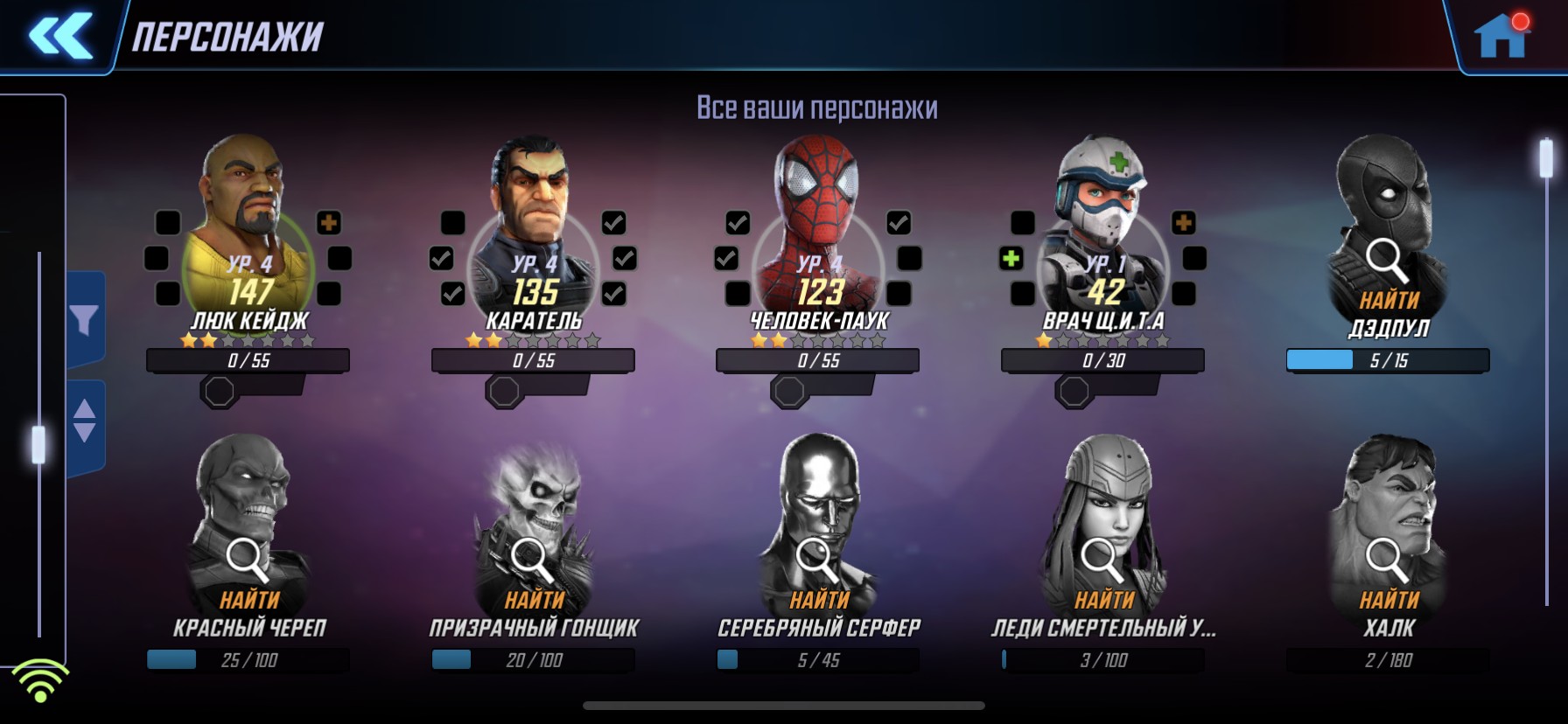What can be fixed in top mobile battlers — in your column for App2Top.ru Anna Putintseva, founder of the monetization company, told INCYMO.AI .
Raid: Shadow Legends
Anna Putintseva
In this article, I set myself the task of highlighting problematic moments in modern battlers from the point of view of monetization and offering possible solutions.
In the article, I call the battlers mobile midcore games, in which the player manages the roster of heroes, pumps them, finds the most advantageous combinations of them, and so on.
By the leading battlers, I mean Raid: Shadow Legends, Star Wars: Galaxy of Heroes (A detailed analysis of the mechanics of the game can be read here. — Ed.) and Marvel Strike Force. Why them? All titles from the list are included in the box office top 3 genres in the USA.
In the article, I will first tell you a little about the genre, about the specifics of its monetization, and then I will move on to the problems of these titles.
A little bit about the genre
The battlers gained wide popularity in the West in the mid-tenths, when the Heroes Charge developed in Asia declared themselves on the market (we published an analysis of its combat system here. — Ed.) and Summoners Wars.
Summoners Wars
It is generally believed that they laid the foundations of what the genre looks like today. For example, they introduced 60/120 energy replenishment in the game, set a “price tag” for entering the battle in the amount of 6 energy, and so on.
However, the claims that they “laid the foundations” should be treated with an enviable degree of skepticism. Heroes Charge was, for example, a clone of another Chinese game, and Summoners Wars borrowed a lot from Japanese battlers of the early tenth.
Gameplay in games of this genre, as a rule, is divided into two main components: battles (formally core gameplay, according to the results of which the party receives experience and resources for pumping, as well as new heroes / fragments / cards) and team management (within which the roster is managed and pumping).
Battles can take place both with and without the participation of the player, take place in real time or be turn-based. This is not so important, because in the first place in such games after the first days of the game, the pumping and management of heroes invariably turns out to be in the first place.
Monetization in battlers
The distribution of buttler revenue by monetization funnels looks like this:
- 30-55% — energy sales;
Energy is one of the main funnels, as it is spent on battles in various game modes, without which it is impossible to further develop the heroes. The energy is self-replenished over time, but if a player wants to pump up quickly and play continuously, he has to pay.
- 20-40% — purchase and upgrade of heroes;
As for the purchase of heroes, the high proportion of sales within this funnel is due to how exactly the player receives them. As a rule, heroes (or their fragments, from which you can then assemble a whole character) “fall out” of chests. The percentage of loss of strong heroes is much less than that of weak ones. Therefore, a player, if he wants a strong roster, needs to spend a lot on chests. Such a monetization mechanic is generally called a gacha.
By the way, when the user does not want to convert within the framework of the gacha, the battlers use special offers (including direct sales of heroes, valuables and other content that covers the needs of the player). Due to this, it is possible to increase the share of users spending on offers up to 40% after 2 months of play, and also affect the retention of payers with early conversion up to 14 days.
- 10-20% — buying things;
Things can also “fall out” of the gacha.
- 5-15% — various subscriptions.
There is another nuance with energy. In some titles, each subsequent purchase of energy may cost more, as well as require VIP status. The latter is just a subscription.
We will not dwell on exactly how each top buttler works with these funnels, but we will talk about the problems that projects have and which can negatively affect their revenue.
Raid Shadow
The key problem is the lack or insufficient fixation of the game on the user’s state.
For example, the game “does not see” how much energy has accumulated, so it can offer a player even with full reserves of energy offers with its purchase. In this case, the conversion to viewing by the player of each subsequent offer will decrease.
Raid: Shadow Legends
Incorrect setting of display priorities reduces the possible revenue from special offers.
The game also uses a very wide range of offers. When you enter the game, a lot of pop-ups with special offers appear instead of offering one thing that would meet the user’s interests.
Most likely, this hits the conversion rate in the purchase. And the players are unhappy, judging by the reaction in the stores.
From this I conclude that the game does not work with the price and composition of offers during rotation. Raid, apparently, is just sorting through the options in the hope that the player, who is randomly flooded with offers, will buy something that he likes.
I am sure that Raid Shadow Legends can improve the conversion to the purchase of special offers by 3-10% by optimizing rotation and prioritizing the right offers.
Marvel Strike Force
There are two problems here.
Firstly, with color coding.
The use of colors and other symbols of the value of heroes increases the share of income from special offers with heroes up to 40%. So there is nothing surprising in the fact that color coding in battlers is a common practice.
However, Marvel Strike Force does not work at all with the color coding of heroes. The player can determine the value of the hero only by the lore of the Marvel universe. Even in the windows of the gacha, all the characters are in the same blue frames.
The circles around the portraits indicate the synergy of the characters, but not their rarity
Secondly, the problem of non-obvious sentences.
Here are some examples.
1) The first offer to a beginner is to buy a team and energy. But the player does not understand how strong these heroes are, what the numbers next to each hero mean.
Offer to a beginner
2) For the same first sentence, a time limit of 33 days is given. It’s too long. As a rule, “timepressing” is used to convince the player to make an emotional purchase. However, having a limit of 33 days is hardly a significant motivator.
3) In the column “Offers” there is an abundance of equivalent (or seemingly equivalent in the framework of onboarding) offers. For example, at the time of writing this material, the player is offered to purchase fragments of either Venom, Deadpool, or Vision at the same price.
Such an abundance of offers can and most likely will cause a dilemma of choice.
I believe that Marvel Strike Force can:
a) speed up the “printing” of whales and increase their payments in the first months by adding a color definition of the strongest heroes in special offers;
b) increase the conversion to the second and third payments by 2-4% and increase the average check by 10% by adding significantly different bundles from each other.
Star Wars Galaxy of Heroes
There are also problems with offers here.
First. There are not enough special offers for a beginner on the main screen — only two. One is a set for converting into a payer, the second is “buy everything at once”.
There are a lot of offers in the in-game store, but only one is designed for a beginner. Besides, he still needs to be found.
And here we come to the second problem: the non-obvious possibility of scrolling on tablets (for a second, tablet users can bring up to a quarter of revenue to battlers).
Star Wars Galaxy of Heroes
Returning to the proposals. The game has various sets with different prices and guaranteed heroes. But the conversion rate to viewing such offers for beginners will be very low, since these offers do not appear on the main screen. There is a possibility that with such work of special offers, potential whales will not be able to spend money effectively.
Perhaps to solve this problem (as well as to increase revenue from a high-paying audience), the developers added the offer “buy everything at once” (Hyperdrive bundle) for the maximum shooting range.
Perhaps Star Wars Galaxy of Heroes can improve the conversion to the first payment by 10-15% due to the correct presentation of the beginner’s kit on the home screen and the conversion to the purchase of special offers for beginners from tablets by 2-5% due to the correction of the scrolling interface in the store.
Editor’s Note: in fairness, we note that:
- RAID: Shadow Legends (2 years on the market) has earned more than $560 million “clean” (with deduction of taxes and the share of platforms) to date;
- Marvel Strike Force (3 years on the market) earned “clean” — $ 480 million;
- Star Wars: Galaxy of Heroes (6 years on the market) earned “clean” — around $800 million.







